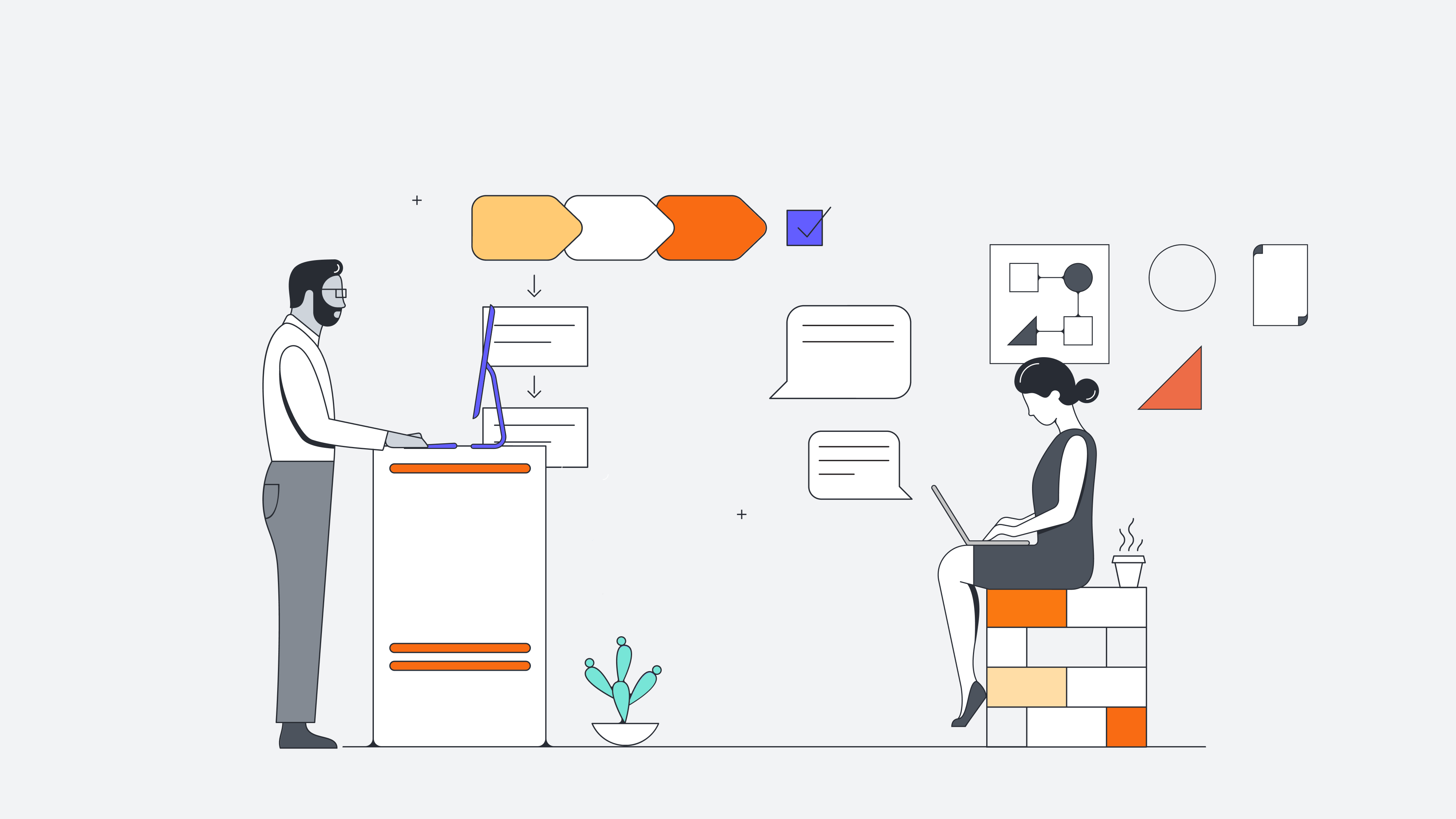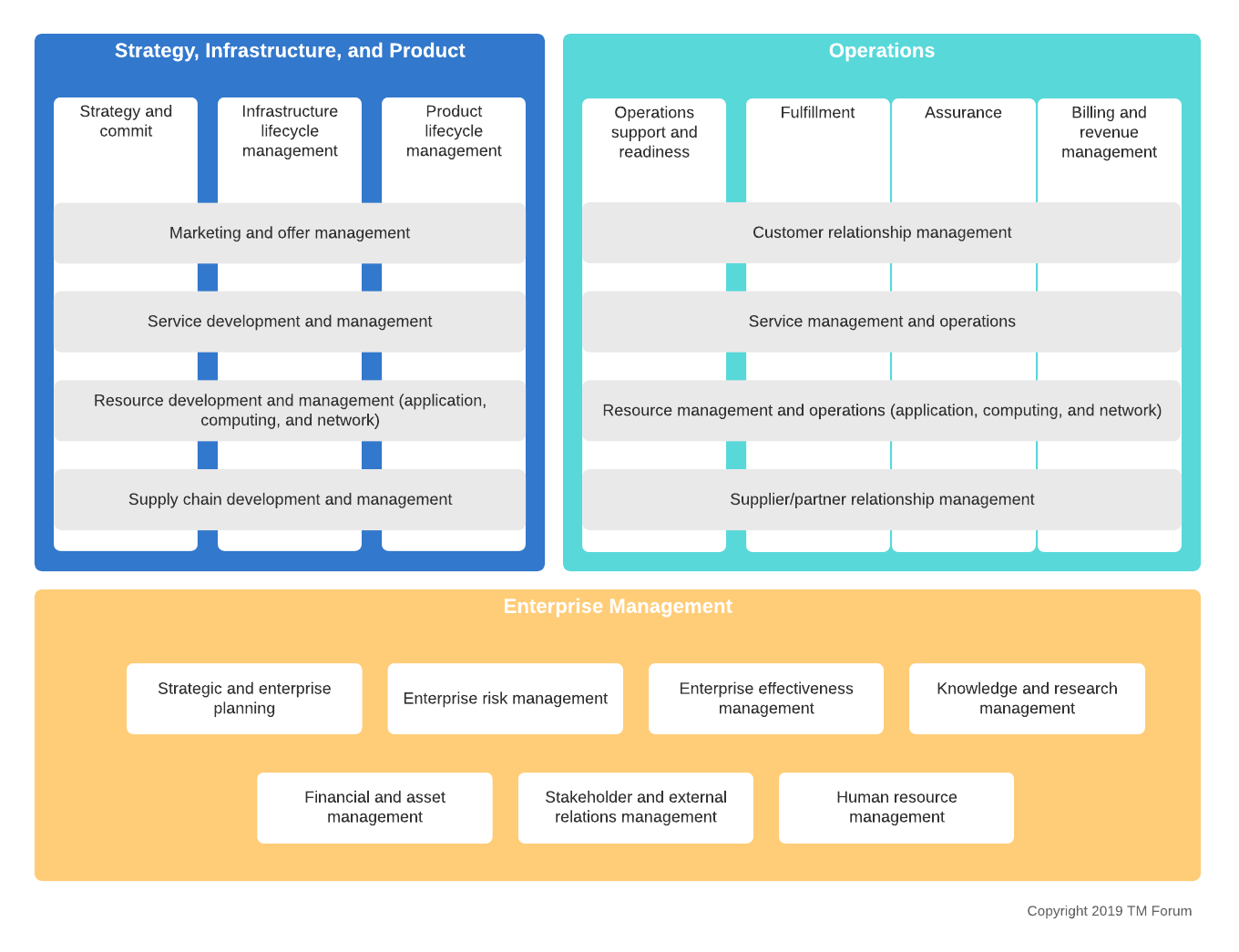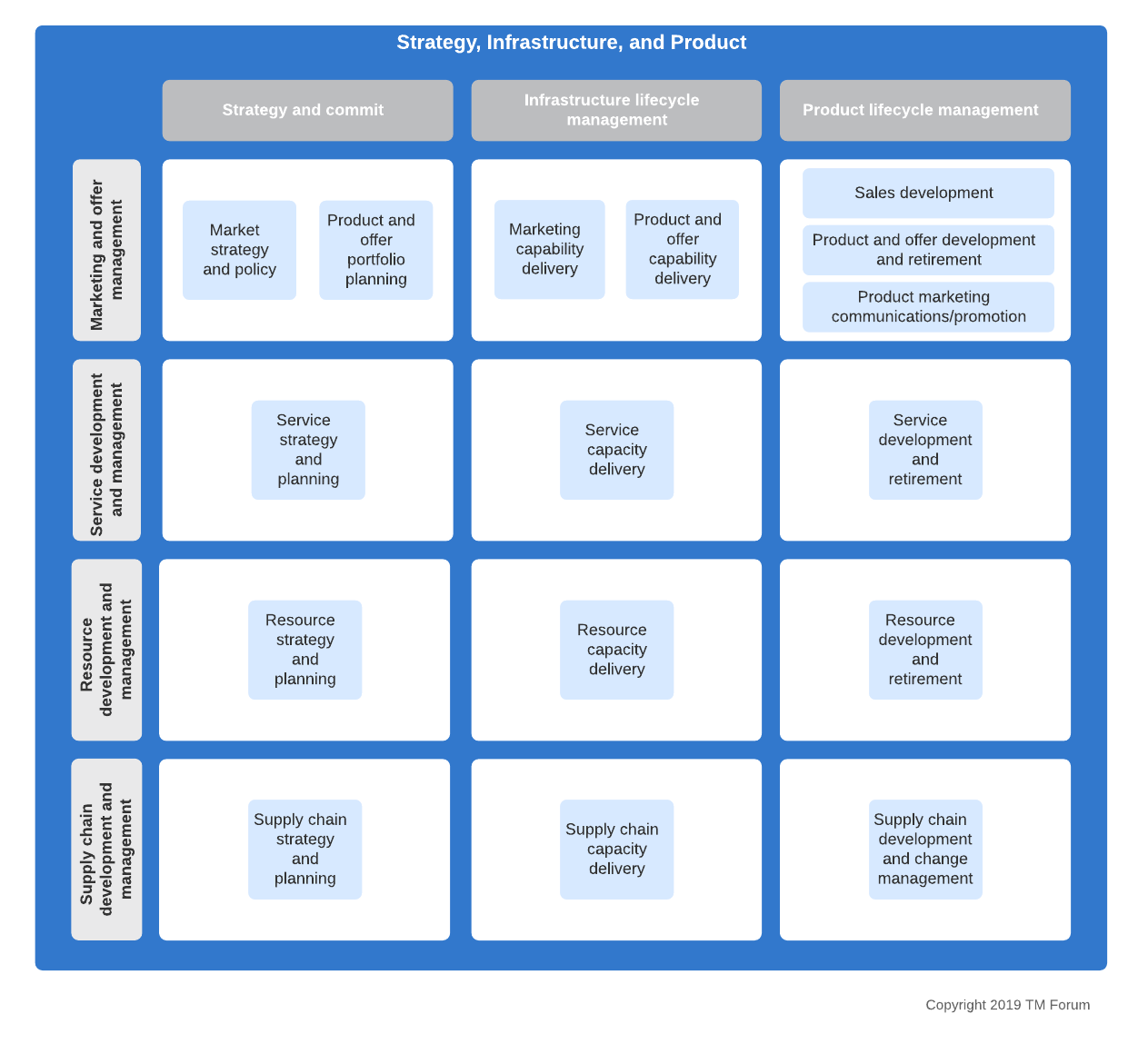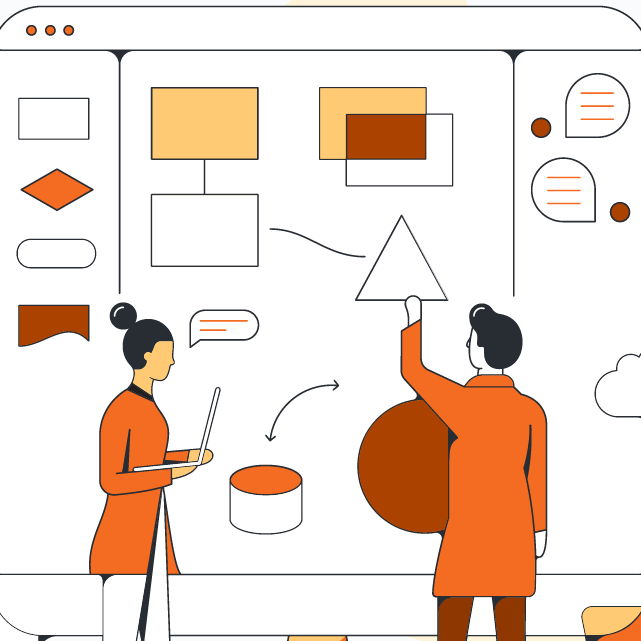
Business Process Framework (eTOM): A plan for business success
Reading time: about 6 min
Topics:
In the business world, companies are only as successful as the processes they depend on. Defining these processes from the outset will give your company an edge over the competition and the ability to adapt to shifting business landscapes and challenges.
On the other hand, companies that don’t have clearly identified processes for communicating across industries will be left behind or stuck in vacuums. This lack of standardization not only slows a company’s individual evolution, but it also hinders its ability to work with diverse businesses, employees, and suppliers to bring a product from ideation to reality.
Failing to create a clear business process framework costs companies money and frustrates employees and customers. Luckily, though, there’s a solution.
Leaders in the fields of information technology, telecommunications, and other digital services have spent years building bridges between industries and creating reliable, common frameworks to run successful digital enterprises. These integrated systems are referred to as the Business Process Framework, formerly known as the enhanced telecommunications operations map,or eTOM. These best practices that will help your company build (or rebuild) its systems, operations, and infrastructure from the ground up.

What is the eTOM model?
The Business Process Framework is a collection of best practices, standards, and models that have been developed and refined by a collaborative community of digital pioneers. At its core, it is a hierarchical inventory of all the elements and systems involved in running an adaptable, agile, service-focused company.
Developed by TM Forum, the Business Process Framework grew out of a collaboration between telecommunications companies who were searching for an effective way to communicate with each other. The original framework was known as an enhanced telecommunications operations map, or eTOM.
But as the telecommunications industry gave way to a diverse landscape of digital enterprises, leaders got together to reimagine eTOM and update it for the 21st century—making it broad enough to apply to any digital enterprise but structured enough to give a wide array of businesses a common language.
Benefits of the Business Process Framework
The Business Process Framework is ideal for companies who are looking for a comprehensive but customizable set of best practices that different companies can apply to different aspects of their organizations, products, or services.
For example, service providers like a domain host or an Internet service provider can use the Business Process Framework as a reference point for internal system restructuring, as well as relational agreements with other companies. A telecommunications provider might use the process to plan, design, and implement a technology upgrade across their system, leading to streamlined product delivery and greater customer satisfaction. An entertainment business could use the framework to help with knowledge management, creating systems for teams and companies to share information so everyone is on the same page.
By implementing the eTOM framework, your business can:
- Create a common language for everyone involved in a project, improving communication inside your businesses and with partners, suppliers, and marketers.
- Provide a flexible approach to business management, allowing companies to create processes that meet their specific needs while still following industry practices.
- Offer business processes at all levels, from broad, enterprise-based areas like human resources and financial planning to the granular aspects of daily business operations.
- Provide clear direction for internal employees and seamless working relationships with other businesses and contractors.
- Develop a clear process for developing products and products, creating a template that can be used—and reused—across the whole enterprise at various phases and stages of a project.
- Create processes and applications that allow customers to self-manage, saving companies money and consumers time.
- Drive down the cost of a project.
- Reduce risks.
- Speed integration and implementation.
There are as many ways to use the Business Process Framework as there are businesses—and that’s the idea. But whichever process you prioritize, a clear, communicable and easily implemented process will help you increase efficiency, reduce costs, collaborate with others, and drive up customer satisfaction.
How to use the Business Process Framework
Developers of the business processes have organized the framework into three major areas—all of which correspond to common categories of phases of product development and management. These areas include strategy, infrastructure, and product; operations; and enterprise management.
The three main conceptual sections of the eTOM model are divided into vertical columns, which specify end-to-end business processes such as billing and customer support, and horizontal rows, which deal with functional business processes like overseeing the supply chain.
At the first level of detail—often known as the CEO view—eTOM helps a company visualize and plan for all the processes required for a successful enterprise. At each successive level, the framework becomes more detailed, specifying the different inputs, outputs, and activities required to complete common business functions from start to finish.
Strategy, infrastructure, and product
This area includes all processes related to planning and managing the lifecycle of a product. The rows, which align with the operations area, describe functional processes, including:
- Market, product, and customer management
- Service development, management, and operations
- Resource development, management, and operations (application, computing, and network)
- Supply chain development and management (for operations, supplier/partner relationship management)

Operations
This is the core of the eTOM model, and it covers all processes that support customer management, from preparing customer interfaces to overseeing daily customer support operations. These end-to-end business processes include:
- Operations support and readiness
- Fulfillment
- Assurance
- Billing and revenue management

Enterprise management
This section of the eTom framework covers the general structures and processes required to run every aspect of daily business, from human resources to financial management.
These three elements form the conceptual level view in the eTOM framework, and they encapsulate all the broad business processes involved in running, revamping or improving your business. For example, a company might use the strategy, infrastructure, and product phase to organize how they strategize about a new product, create an infrastructure management plan, or manage the product throughout its lifecycle.
Companies focused on operations can use the framework to create a clear process for everything from customer relationship management to billing and revenue. And, in the enterprise phase, the framework helps a company chart a plan and process for risk management, human resources management, and anything else that is key to the success of the project—and process—as a whole.
Because the framework is flexible, companies can choose to focus only on the parts that are relevant to them at the time or use the entire framework to build a new enterprise from start to finish. And, since the business process framework is universal across digital industries and companies, it can be used to communicate and collaborate with everyone from suppliers to marketers and laborers.
Implementing successful business processes
Ready to use the Business Process Framework? Lucidchart lets you customize templates or start your own projects to meet your company’s goals. As an industry-leading diagramming platform, Lucidchart has the functionality to visually map out any part of your business operations, allowing your company to go farther, faster.

Learn all about how Lucid can optimize your organization.
Go nowAbout Lucidchart
Lucidchart, a cloud-based intelligent diagramming application, is a core component of Lucid Software's Visual Collaboration Suite. This intuitive, cloud-based solution empowers teams to collaborate in real-time to build flowcharts, mockups, UML diagrams, customer journey maps, and more. Lucidchart propels teams forward to build the future faster. Lucid is proud to serve top businesses around the world, including customers such as Google, GE, and NBC Universal, and 99% of the Fortune 500. Lucid partners with industry leaders, including Google, Atlassian, and Microsoft. Since its founding, Lucid has received numerous awards for its products, business, and workplace culture. For more information, visit lucidchart.com.
Related articles
How to develop a competency framework
A competency framework can help your company define the skills, knowledge, and characteristics required from members of your organization, plus it will help your employees grow in their jobs. Learn how to create a competency framework now.
Top frameworks for strategic planning
Look at some strategic planning frameworks that will help you to see where you can improve, define your goals, and map out the processes and procedures you will use to keep achieving your goals.
7 fundamental change management models
Change management generally refers to how teams and companies implement organizational change. Learn 7 tried-and-true change management models that organizations return to again and again.
A quick and dirty guide to the Business Model Canvas
Interested in starting a business? Use our Business Model Canvas template to create a visual of how your business should work.
